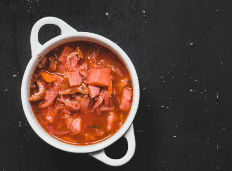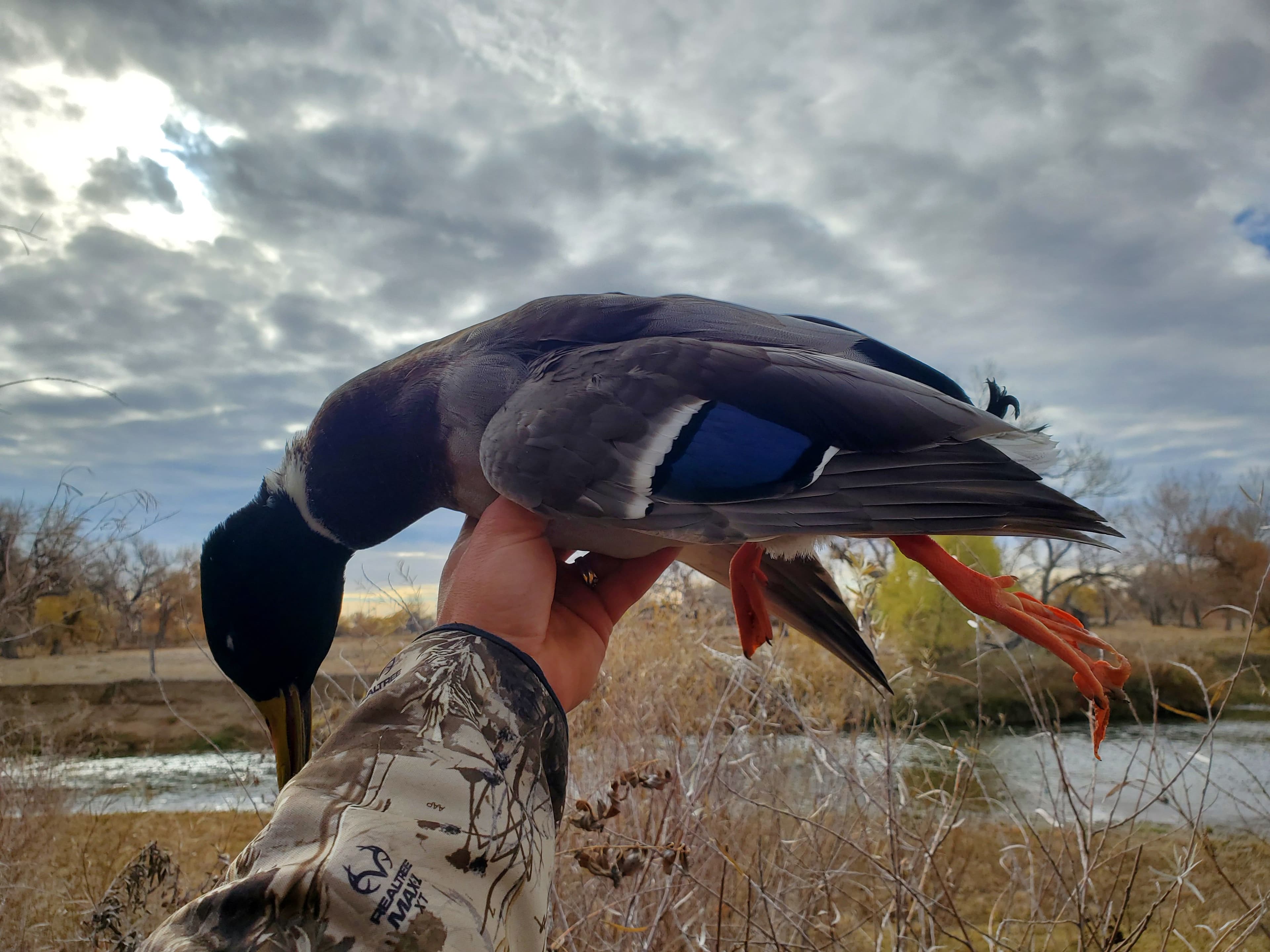Top 5 Wild Duck Recipes: Delicious and Easy Cooking Ideas


Justin Hunold
12/27/2024
its unique qualities Understanding wild duck cooking wild duck is an art that combines understanding the unique qualities of this game bird with the proper techniques to make it shine. For those who love a challenge in the kitchen, wild duck offers bold flavors and endless opportunities for culinary creativity. This guide begins with essential tips to understand wild duck's flavors and cooking methods before diving into recipes that turn this game bird into a gourmet feast.
Understanding Wild Duck Flavors
Thanks to their natural diet and active lifestyle, wild ducks are unlike their farm-raised counterparts. Their diet of aquatic plants, grains, and small fish gives them a robust, earthy flavor that many game enthusiasts prize. Unlike store-bought ducks, wild ducks are leaner, with firmer meat and less fat, making preparation and cooking techniques crucial.
Unique Characteristics of Wild Duck
.Wild duck meat is dark, rich, and dense. It can be slightly gamey, depending on the species and its environment,; itis somewhat gamey, with mallards and teal often considered the most palatable. The fat content is unevenly distributed, usually concentrated under the skin, which contributes to its flavor but requires proper rendering to avoid a greasy texture.
Flavor Pairing Suggestions
When working with wild duck, ingredients that complement its bold flavor are key. Sweet and acidic fruits like oranges, cherries, or cranberries balance the meat's richness. Herbs such as rosemary, thyme, and sage add earthiness, while spices like juniper berries, garlic, and black pepper highlight the duck's savory notes. These combinations enhance the natural flavors of the duck and create a well-rounded dish.

Cooking Techniques for Wild Duck
Wild duck requires careful preparation to ensure tenderness and prevent overcooking. Here are the key methods to bring out its best.
Slow Cooking Techniques
Slow cooking is ideal for tougher cuts, such as legs or whole birds. This method ensures the meat stays moist and tender:
- Braising: First, sear the duck, then simmer it in a flavorful liquid like wine, broth, or beer. Low heat breaks down the connective tissue, resulting in a rich, tender dish.
- Slow Cooker: Add duck breasts or legs with vegetables, stock, and seasonings. Cook on low for several hours for a hassle-free, flavorful meal.
Roasting and Grilling
Roasting allows for crispy skin and even cooking:
- Preheat your oven to a high temperature to sear the skin, then lower it to finish cooking evenly.
- Use basting techniques with butter or pan drippings to keep the meat moist.
Grilling gives the meat a smoky flavor while sealing in juices:
- Marinate duck breasts for added flavor and grill over medium heat, turning frequently for an even cook.

Proper Aftercare for Duck Hunters
Taking proper care of your harvested ducks ensures the best flavor and texture for your meals. Here's an expanded guide on the critical steps to process ducks after a hunt.
Field Dressing
Cleaning ducks immediately after harvesting is essential to maintaining meat quality and preventing spoilage.
- Incision: Use a sharp knife to make a clean cut along the bird’s belly to access the internal organs.
- Removing Organs: Carefully remove the heart, liver, intestines, and other internal organs, avoiding puncturing the intestines to prevent contamination.
- Cleaning the Cavity: Rinse the cavity thoroughly with water if available, or wipe it clean with a damp cloth to remove blood and debris.
Prompt field dressing ensures the meat stays fresh and reduces the risk of spoilage.
Cooling and Storage
- Immediate CoolingAs soon as possible, place: Place the dressed ducks in a cooler with ice packs, keeping the temperature below 40°F.
- Layering with Ice: If on an extended trip, layer ducks with ice to ensure even cooling.
- Refrigeration or Freezing: Once home, refrigerate ducks if they’ll be cooked within a few days. For longer storage, vacuum-seal the meat to prevent freezer burn and preserve flavor.
Plucking and Cleaning
Plucking is a necessary step, especially if you plan to cook the duck whole, as the skin adds flavor and texture.
- Hand-Plucking byby picking out on Use: Start with the larger wing and tail feathers, then move to the smaller body feathers. For a clean finish, use your fingers to remove pinfeathers.
- Wax Dipping: To pluck the duck faster, dip it in hot water mixed with paraffin wax. Once the wax cools, it can be peeled off along with the feathers.
- Singeing Feathers: Use a flame to singe off any remaining pin feathers.
- Trimming knife knife: Use a sharp knife to remove the head, feet, and wing tips with a sharp knife. Rinse the cavity thoroughly to ensureit iss clean and free of debris.
Dry Aging
Dry aging can enhance the flavor and tenderness of wild ducks.
- Hanging the Bird: Place the plucked and cleaned duck in a cool, well-ventilated space (35°F to 40°F). Use a secure hook or rack to hang the bird.
- Timing: Allow the duck to age for 2-3 days. This process allows natural enzymes to tenderize the meat and concentrate its flavor.
- Precautions: Ensure the area is free from pests and strong odors to avoid contamination.
Final Preparation
Before cooking, inspect the duck to ensure it’s clean and ready for your recipe.
- Debris Check: Look for any missed feathers or remaining debris from processing.
- Pat Dry: Use paper towels to dry the duck thoroughly before seasoning or cooking.
- Storage: If you aren’t cooking immediately, refrigerate or freeze the duck using airtight or vacuum-sealed packaging.
By following these steps, you’ll ensure your wild ducks yield the best results, honoring your harvest and elevating your culinary experience.

Wild Duck à l'Orange
A classic French recipe pairing rich duck with a sweet, tangy orange glaze.
Ingredients
- 1 whole wild duck
- Salt and pepper
- 1 orange (zest and juice)
- ½ cup sugar
- ¼ cup white vinegar
- 1 cup chicken stock
Needed Items
- Roasting pan
- Small saucepan
- Basting brush
Instructions
- Preheat your oven to 375°F (190°C).
- Season the duck generously with salt and pepper, placing it in a roasting pan.
- Roast the duck for 1-1.5 hours, occasionally basting with rendered fat.
- In a small saucepan, combine orange juice, zest, sugar, vinegar, and chicken stock. Simmer until thickened into a glaze.
- Brush the orange glaze over the duck in the last 10 minutes of roasting, reserving some for serving.
- Rest the duck for 10 minutes, then carve and serve with the remaining glaze.
Crispy Wild Duck Breast with Juniper
A dish that combines crispy skin with the aromatic essence of juniper berries.
Ingredients
- 2 wild duck breasts, skin-on
- 1 tsp crushed juniper berries
- Salt and pepper
Needed Items
- Cast iron skillet
- Sharp knife
Instructions
- Score the skin of the duck breasts in a crosshatch pattern—season with salt, pepper, and juniper berries.
- Cast-iron. CookHeat a cast iron skillet over medium heat. Place the duck skin-side down to render the fat, cooking for 8-10 minutes until the skin is crispy.
- Flip the duck and cook for 2-3 minutes more for medium-rare. Adjust timing for desired doneness.
- Let the duck rest for 5 minutes before slicing and serving.
Wild Duck Confit
A traditional preservation technique yielding tender, flavorful duck legs.
Ingredients
- 4 wild duck legs
- 2 cups duck fat
- 1 tbsp kosher salt
- 2 garlic cloves, crushed
- 1 sprig thyme
Needed Items
- Dutch oven
- Glass jars for storage
Instructions
- Rub the duck legs with salt, garlic, and thyme. Refrigerate overnight.
- Rinse the legs to remove excess salt and pat dry.
- Preheat the oven to 225°F (110°C). Submerge the legs in melted duck fat in a Dutch oven.
- Bake for 3-4 hours until tender. Store in jars submerged in fat.
- To serve, sear the legs in a hot pan until crispy.
4) Wild Duck Gumbo
A hearty Cajun classic full of bold flavors and spices.
Ingredients
- 2 wild duck breasts, diced
- ¼ cup flour
- ¼ cup vegetable oil
- 1 onion, diced
- 1 green bell pepper, diced
- 2 celery stalks, diced
- 4 cups chicken stock
- 1 tbsp Cajun seasoning
Needed Items
- Large stockpot
- Wooden spoon
Instructions
- Make a roux by whisking flour and oil in a pot over medium heat until deep brown.
- Stir in onion, bell pepper, and celery, cooking until softened.
- Add the duck and cook until browned. Pour in chicken stock and season with Cajun spices.
- Simmer for 1 hour. Serve over rice with hot sauce.
5) Thai Red Curry Wild Duck
A vibrant, spicy dish inspired by Thai flavors.
Ingredients
- 2 wild duck breasts, sliced
- 1 tbsp Thai red curry paste
- 1 can of coconut milk
- 1 tbsp fish sauce
- 1 tsp brown sugar
- 1 red bell pepper, sliced
- Fresh Thai basil leaves
Needed Items
- Wok or large skillet
- Wooden spatula
Instructions
- Heat the curry paste in a wok over medium heat, then stir in coconut milk until smooth.
- Add the fish sauce, sugar, and duck slices. Cook until the duck is tender.
- Stir in bell pepper and cook for two more minutes.
- Garnish with Thai basil and serve with jasmine rice.
Drink Pairings
- For Wild Duck à l'Orange: I suggested a medium-bodied Pinot Noir or a crisp Riesling.
- For Crispy Wild Duck Breast with J,niper: I paired it with a robust Syrah or smoky Scotch whiskey.
- For Wild Duck Confit: I recommended a full-bodied red like Cabernet Sauvignon or a dark Belgian ale.
- For Wild Duck Gumbo, I suggested a cold Abita beer or a chilled Sauvignon Blanc.
- For Thai Red Curry Wild Duck: I added options like Singha beer or Gewürztraminer wine.
These recipes offer a deep dive into the bold, savory world of wild ducks. Each step ensures your bird is cooked to perfection, celebrating the flavors of the hunt. Enjoy the process and bon appétit!